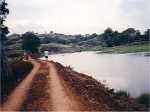
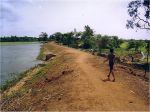
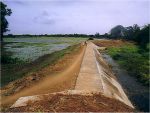
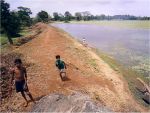

Wilde Ganzen

NCDO

|

|

|
 |
| Wewa Program Sponsor |

Wilde Ganzen |
 NCDO |

Restoration of small wewas to collect rain water from seasonal streams
during the monsoon for use in the dry season began in 1990 with the help of
Delft University of Technology, the Netherlands. Through co-operation for
development FfP has restored three wewas. Wewa restoration program 2005 is
sponsored by Wilde Ganzen , NCDO and Berkel and Rodenrijs and Asuaid with technical support from the Delft University
the Netherlands. At present the Watagala wewa is being restored with sponsorship
from Wilde Ganzen NL and Berkel and Rodenrijs NL.
In South East Sri Lanka rainfall occurs erratically, but mainly in two periods
during the year. Historically there were many small wewas or reservoirs that
held water even in the smallest stream. This was a response by the kings to
the irregular rainfall which limits crop productivity in the dry zone. This
system of soil and water conservation developed about 500AD and was widely
used until recent times. As well as used for irrigation, the wewa raised ground
water levels so that the village wells had water for household use, for farming,
animal husbandry and for fish.
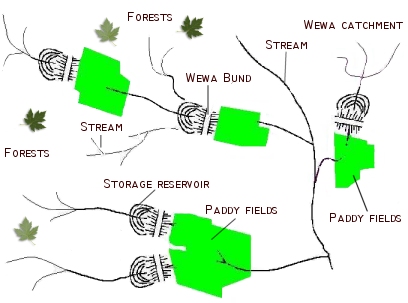
The three components of an wewa are the bund, sluice and spill. The bund holds the water back and is made of earth. Through a outlet pipe of the sluice water is conveyed to the irrigation channel for crop cultivation. A spill is to discharge flood water. Usually another lower wewa can collect this overflow water.
The wewa program has helped increase the storage capacity of the wewas and thus delay the point of drying up. While used for irrigation the wewa also raised ground water tables